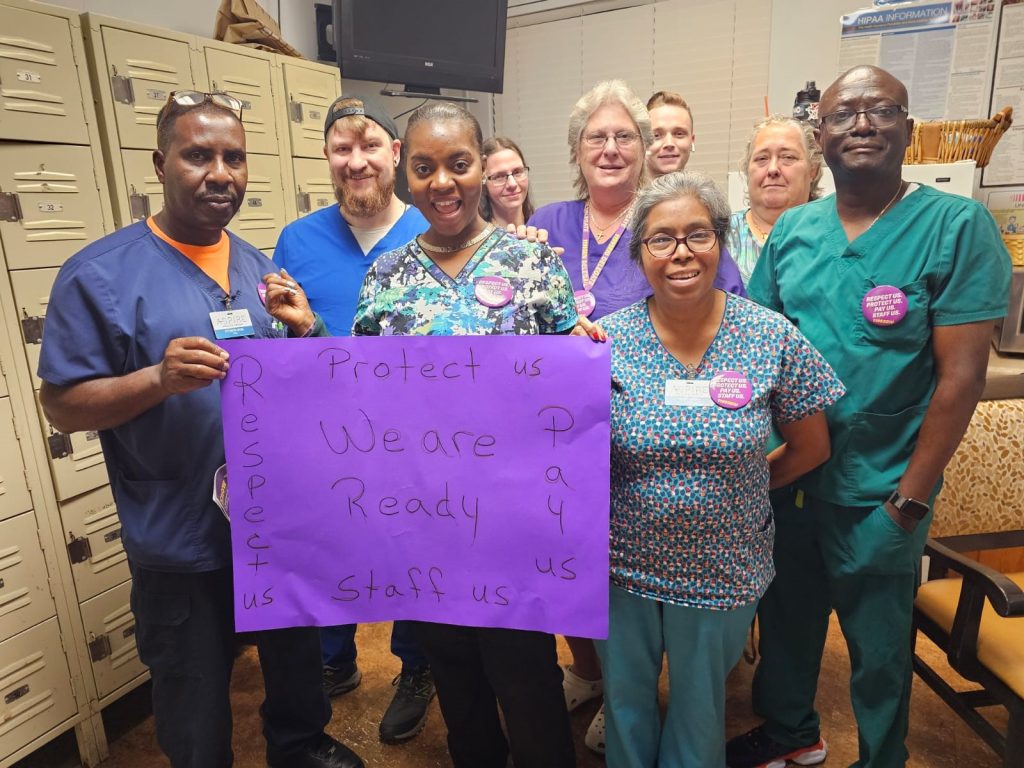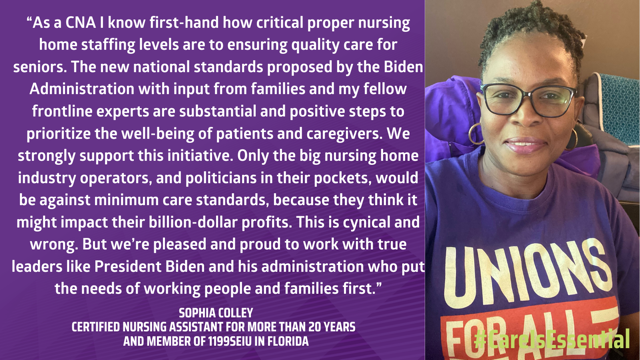By Stacey Singer and Toni-Ann Miller
July 1, 2011
Starting this month, Florida’s 70,000 nursing home residents could find fewer nurses at their bedside after the Florida Legislature voted to lower the homes’ minimum staffing standard by about 8 percent to help them absorb another round of Medicaid budget cuts.
The change means that nursing home patients will be assured an average of just 3.6 hours a day of contact with either a registered nurse, licensed practical nurse or certified nursing assistant, a reduction of about 18 minutes per patient per day.
An estimated 3,000 to 3,500 nurses could lose their jobs statewide as nursing homes shed staff, according to some estimates.
Three out of four seniors in long-term nursing home care have dementia or Alzheimer’s disease and need help with basic needs such as eating and drinking.
Jack McRay, advocacy manager for AARP Florida, predicted that malnutrition, dehydration, falls, bedsores and life-threatening blood infections in nursing homes will increase as nurses become tougher to find.
“You don’t take the nursing out of nursing homes,” McRay said. “We think it was very shortsighted on the part of the legislature.”
The major policy change was inserted into an eleventh-hour budget conforming bill, apparently to mute public input, he said.
“It was published the night before the legislature was adjourned, so it was an up-or-down vote and there was no hearing on this standard,” McRay said.
Medicaid budget cuts are trimming 6.5 percent from nursing homes’ already below-cost reimbursement rates, nursing home representatives said.
In Palm Beach County, 51 nursing homes will lose a combined $13 million because of the cuts, according to the Florida Health Care Association, the long-term care industry’s trade group in Tallahassee.
The Morse Geriatric Center has more than 60 percent of its residents on Medicaid and stands to lose more than $850,000 from the state budget cuts in 2011-2012, the trade group reported.
The suburban West Palm Beach center is a nonprofit that receives some community donations. It will seek savings in food service, vendor contracts and possibly employee raises before cutting staff, CEO Keith Myers said.
“I refuse to cut our front line staff,” Myers said.
The Palm Beach County Health Care District’s public nursing home, the Edward J. Healey Rehabilitation and Nursing Center, has about 70 percent of its residents on Medicaid, said agency spokeswoman Robin Kish. The Healey Center will lose about $460,000 in reimbursements this fiscal year, she said. Because it’s taxpayer-supported, it won’t cut staff, either.
But that won’t be an option in most places.
Statewide, an estimated 40 percent of Florida nursing homes would have operated at a loss in 2011-2012 without the flexibility to cut professional staff, the Florida Health Care Association warned.
The association tried throughout the legislative session to prevent another year of drastic budget cuts to Medicaid’s nursing home rates, said reimbursement director Tony Marshall. Ultimately, the state chose to balance its budget by taking $187 million from Medicaid’s nursing homes, Marshall said.
“We agree that better staffing leads to better care,” Marshall said. “You can’t staff if you don’t have the adequate funding.”
He said the 3.6-hour standard was determined with the help of a state-commissioned University of South Florida study in 2009. The study found that better staffing requirements passed in 2002 had significantly reduced problems at nursing homes, including lawsuits. The standard rose through the years to 3.9 hours minimum, but most of the benefits had been achieved by the time the standard had reached 3.6 hours, Marshall said.
The state average by 2007 exceeded four hours of nurse care per patient per day, above the national average. But those averages are far below what several studies have said is necessary.
Most studies have shown that patients do better in homes with a greater mix of registered nurses. The Institute of Medicine and the Centers for Medicare and Medicaid Services have said the ideal level of care in nursing homes is 45 minutes of registered nurse staffing per resident per day.
In 2007, Florida nursing home patients’ contact with registered nurses averaged 16.2 minutes a day. Here, staffers were more likely to be nurse assistants, whose pay averaged $11.73 an hour in 2007, compared with $26.19 an hour for registered nurses.
AARP is encouraging nursing home caregivers to sign its petition insisting that the homes commit to maintaining their nurse staffing. About 3,000 caregivers have signed it so far, McRay said.
Marshall said the average state nursing home is surviving on a profit margin of just 4 percent to 6 percent, making AARP’s demands unrealistic.
“It’s unfortunate that this is the route that had to be chosen” to reduce Florida’s budget deficit, Marshall said. “We will be back to the legislature to try to close that gap next year.”






